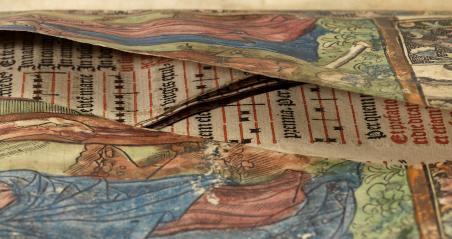
Contributors to Remembering the Reformation
This exhibition is a testament to the fruitfulness of collaborative work—not only among the members of our research team, but between our project and a number of research institutions and their staff.
The development of the printing press in Mainz in the 1450s was immediately recognized as a pivotal moment by contemporaries. Its impact was monumental, heralding a communication revolution akin to the birth of the internet and leading to the slow but inevitable decline of the manuscript as the dominant means of transmission. Fundamental to our understanding of the reception of this seismic event is the evidence left within books themselves. Over the past twenty-five years researchers have focussed increasingly on the marks left by early readers, as a means of assessing how books were used, how and where they moved, their trade, impact and audience.
This exhibition celebrates the conclusion of a five-year project, generously funded by the Andrew W. Mellon Foundation, to catalogue Cambridge University Library’s world-class collection of incunabula, books printed before 1501. It draws on the remarkable body of information amassed during the project about how the earliest printed books were received during the first hundred years of the press. Annotations, provenance, bindings and decoration provide rare and unexpected insights into the use and abuse of incunabula, and into the private lives of both printed books and their owners.
Exhibition curator Ed Potten and incunabula specialist Laura Nuvoloni introduce the exhibition and discuss some of the items on show in this film.
For a demonstration of historical printing practice on the University Library’s wooden hand press, view this introduction to historical printing practice.